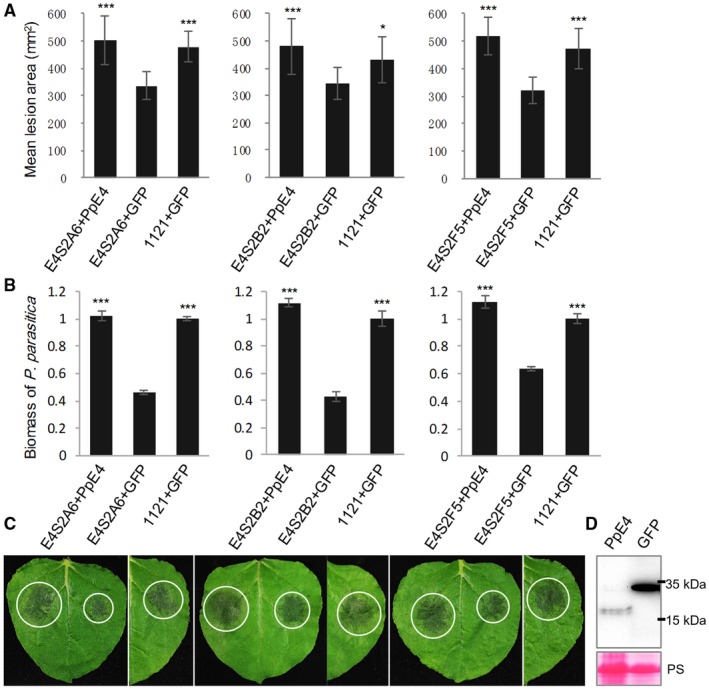Figure 4.

The pathogenicity of PpE4‐silenced Phytophthora parasitica lines is restored by the transient expression of PpE4 in planta. PpE4 and GFP were transiently expressed by agroinfiltration in Nicotiana benthamiana leaves 1 day before inoculation [optical density at 600 nm (OD600) = 0.01]. (A) The lesions formed after the inoculation of PpE4‐silenced lines onto PpE4‐expressing leaves were almost the same size as those formed after the inoculation of 1121 onto GFP‐expressing leaves, whereas the lesions formed by silenced lines inoculated onto GFP‐expressing leaves were significantly smaller. Error bars represent the standard deviation (SD) of 15 leaves, and asterisks denote significant differences from the control group (two‐tailed t‐test: *P < 0.05; ***P < 0.001). (B) Biomass of P. parasitica on N. benthamiana leaves was determined by quantitative polymerase chain reaction (qPCR). Bars represent PpUBC levels relative to NbF‐box levels with SD of three biological replicates. Asterisks denote significant differences from silenced lines inoculated onto GFP‐expressing leaves (two‐tailed t‐test: ***P < 0.001). (C) Representative inoculated leaves. White circles outline the water‐soaked lesions. (D) Protein accumulation detected by western blot using anti‐Flag antibody. Protein loading is indicated by Ponceau stain (PS). Similar results were obtained from three independent experiments with more than 15 leaves inoculated for each group in each experiment. [Colour figure can be viewed at wileyonlinelibrary.com]
